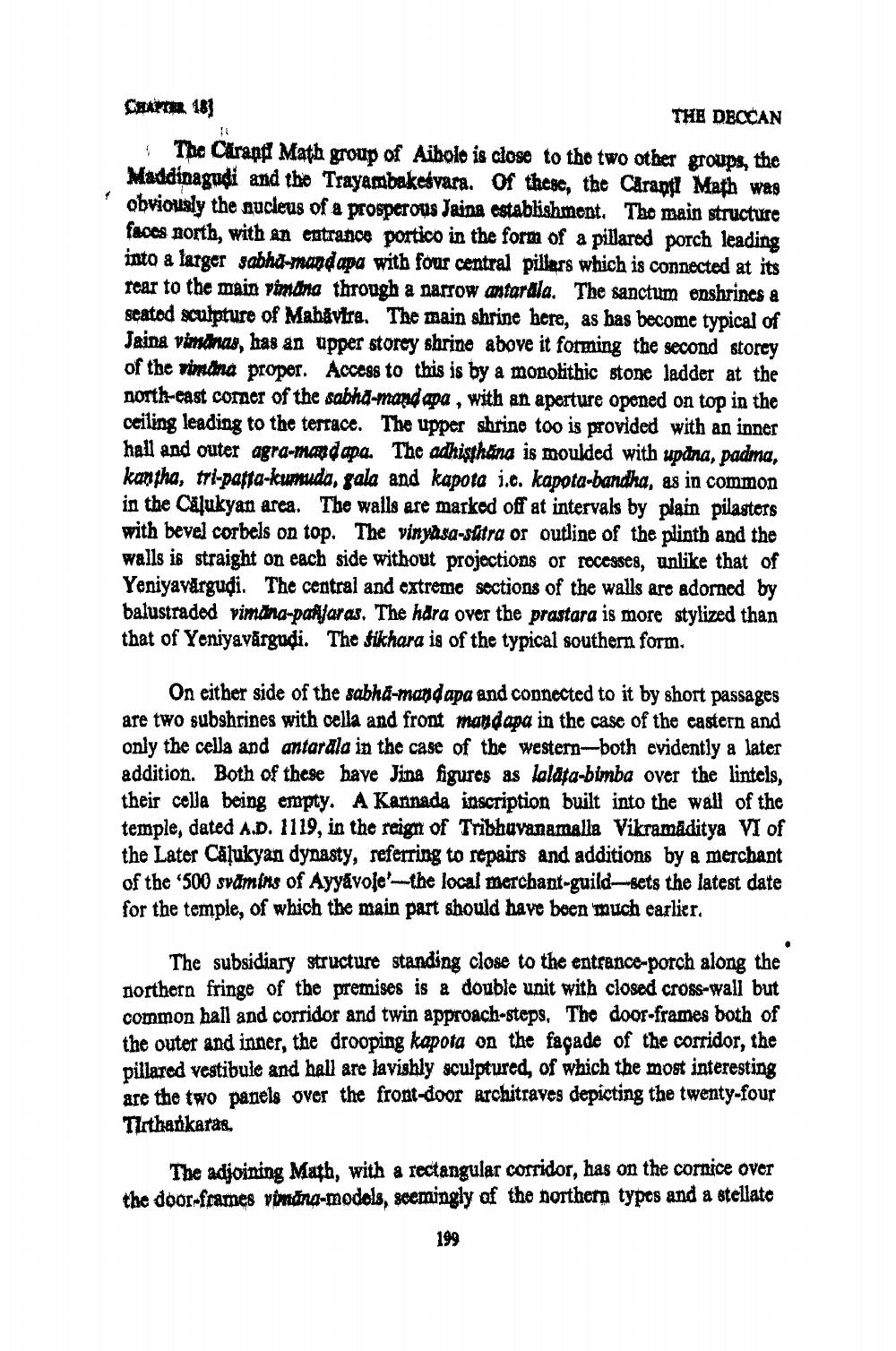________________
Cair, 18)
THE DECCAN The Cirand Math group of Aiholo is close to the two other groups, the Maddinagndi and the Trayambakesvara. Of these, the Carant Math was obviously the nucleus of a prosperous Jaina establishment. The main structure facos north, with an entrance portico in the form of a pillared porch leading into a larger sabha-mand apa with four central pillars which is connected at its rear to the main vimana through a narrow antarala. The sanctum enshrines & scatod sculpture of Mahavira. The main shrine here, as has become typical of Jaina viminas, has an upper storey shrine above it forming the second storey of the rining proper. Access to this is by a monolithic stone ladder at the north-east corner of the sabha-mand apa , with an aperture opened on top in the ceiling leading to the terrace. The upper shrine too is provided with an inner hall and outer agra-mandapa. The adhisthana is moulded with updna, padma, kanpha, tri-parfa-kunuda, gala and kapota i.e. kapota-bandha, as in common in the Calukyan area. The walls are marked off at intervals by plain pilasters with bevel corbels on top. The vinyasa-sútra or outline of the plinth and the walls is straight on each side without projections or roccises, unlike that of Yeniyavargudi. The central and extreme sections of the walls are adorned by balustraded vimina-panjaras. The hdra over the prastara is more stylized than that of Yeniyavärgudi. The Sikhara is of the typical southern form.
On either side of the sabha-mand apa and connected to it by short passages are two subshrines with cella and front mandapa in the case of the eastern and only the cella and antarala in the case of the western-both evidently a later addition. Both of these have Jina figures as lolata-bimba over the lintels, their cella being empty. A Kannada inscription built into the wall of the temple, dated A.D. 1119, in the reign of Tribhuvanamalla Vikramaditya VI of the Later Cāļukyan dynasty, referring to repairs and additions by a merchant of the '500 svämins of Ayyavole-the local merchant-guild-sets the latest date for the temple, of which the main part should have been much earlier.
The subsidiary structure standing close to the entrance-porch along the northern fringe of the premises is a double unit with closed cross-wall but common hall and corridor and twin approach-steps. The door-frames both of the outer and inner, the drooping kapota on the facade of the corridor, the pillared vestibule and hall are lavishly sculptured, of which the most interesting are the two panels over the front door Architraves depicting the twenty-four Tl thankaras,
The adjoining Math, with a rectangular corridor, has on the cornice over the door-frames vindra-modols, seemingly of the northern types and a stellate
199




